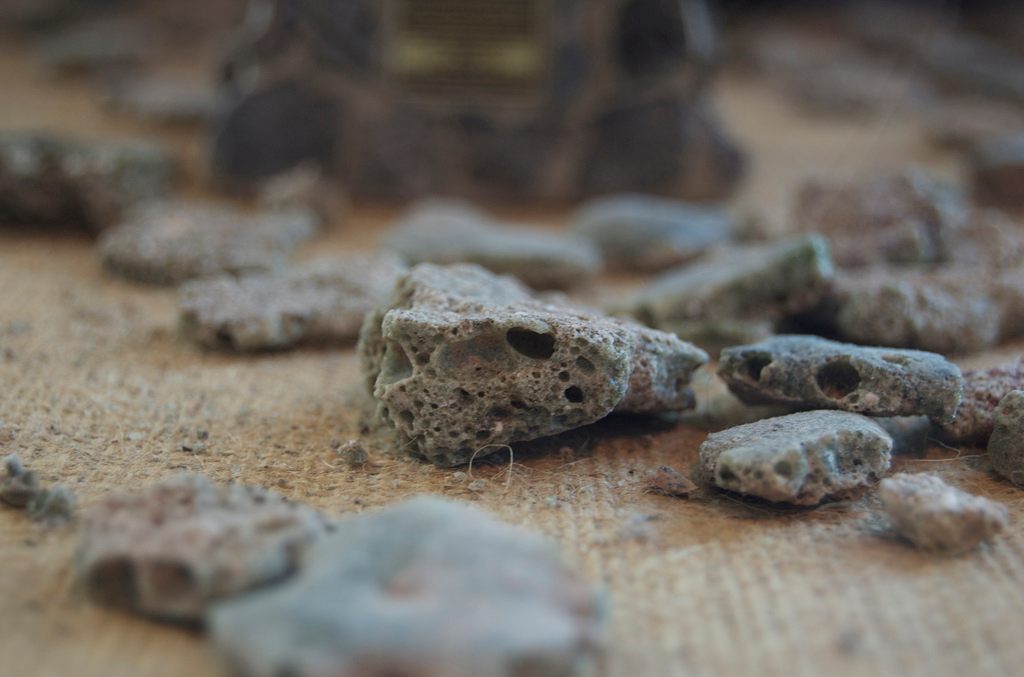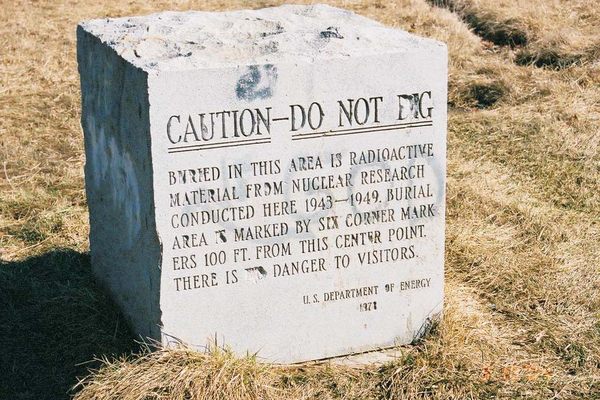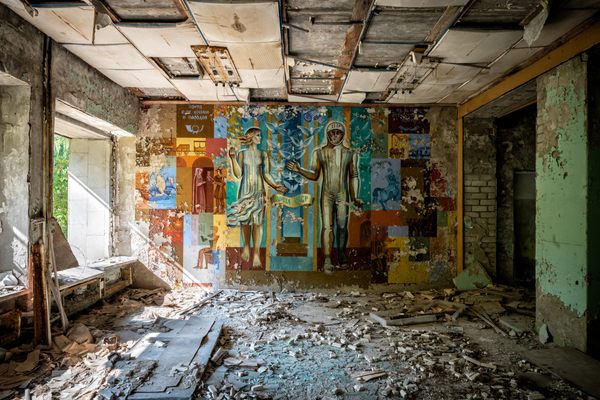Object of Intrigue: Glass Made by an Atomic Bomb

A chunk of trinitite, the first Atomic Age souvenir. (Photo: Shaddack on Wikipedia)
Following four years of top-secret research and development, the scientists of the Manhattan Project were ready to test their first nuclear weapon, a plutonium bomb code-named Trinity.
When the bomb detonated over the sands of New Mexico on July 16, 1945, the fireball heralded the arrival of the nuclear era. It also created something a little smaller: scattered lumps of knobbly green glass.
Trinitite is the mineral that formed from sand that liquefied during the intense heat of the Trinity test. Initially it was believed that trinitite was created when the heat of the fireball liquefied the sand on the ground. In 2005, however, Nuclear Weapons Journal published a study that contradicted that assumption. After conducting “macroscopic measurements and theoretical calculations of the blast” using trinitite samples “approximately the size of a small pancake,” Los Alamos National Laboratory chemist Robert Hermes and his colleagues concluded that the chunks of mineral were formed when sand got scooped up into the atomic fireball, liquefied in the heat, then fell back onto the hot sand on the ground to form glassy clusters.
Also known as Alamogordo glass (due to the test site’s location, near the town of the same name) and atomsite, trinitite is, in the words of health physicist Thomas E. Widner, “one of the most popular souvenirs from the Trinity test.”
 Chunks of trinitite. (Photo: Benjamin Clark on Wikipedia)
Chunks of trinitite. (Photo: Benjamin Clark on Wikipedia)
The White Sands test site, where Trinity was detonated, is open to the public twice a year. But it is almost impossible to find a decent chunk of trinitite there. In 1952, the Atomic Energy Commission began a comprehensive clean-up of the White Sands Proving Ground, in order to prepare it for public tours beginning in 1953. During the bulldozing process, trinitite was “scraped up and buried,” according to the official history of the White Sands Missile Range.
You can, however, score some prime trinitite on the internet. Seventy years after the Trinity test, trinitite is sold online via vendors such as UnitedNuclear.com, complete with a certificate of authenticity. A one-inch chunk will cost you $39 plus shipping.
Should you wish to merely see and not possess the first souvenir of the atomic age, trinitite pieces are also held at the National Museum of Nuclear Science & History in Albuquerque, the National Atomic Testing Museum in Las Vegas, and the Corning Museum of Glass in the Finger Lakes region of New York.


















Follow us on Twitter to get the latest on the world's hidden wonders.
Like us on Facebook to get the latest on the world's hidden wonders.
Follow us on Twitter Like us on Facebook